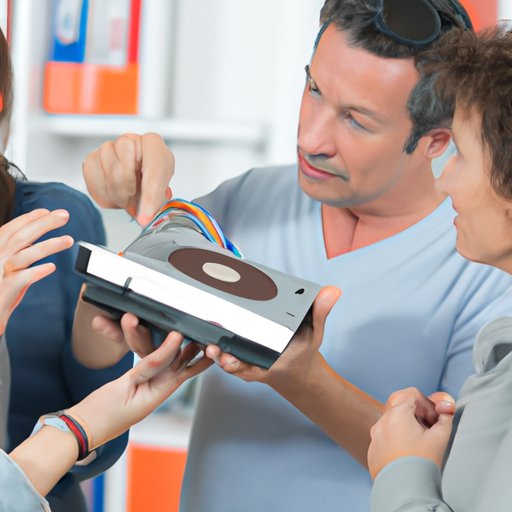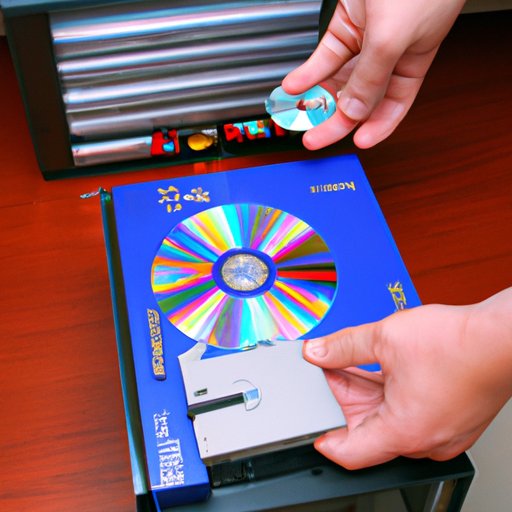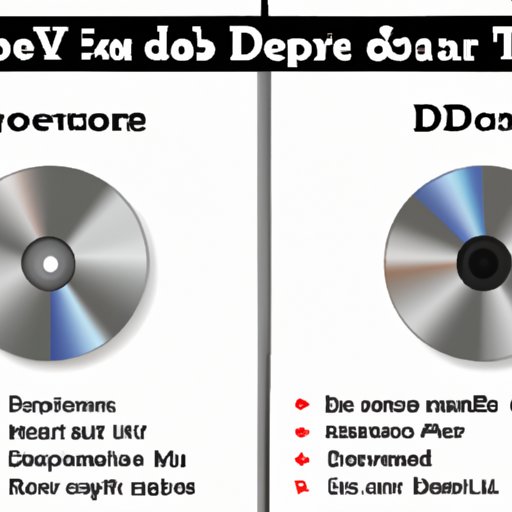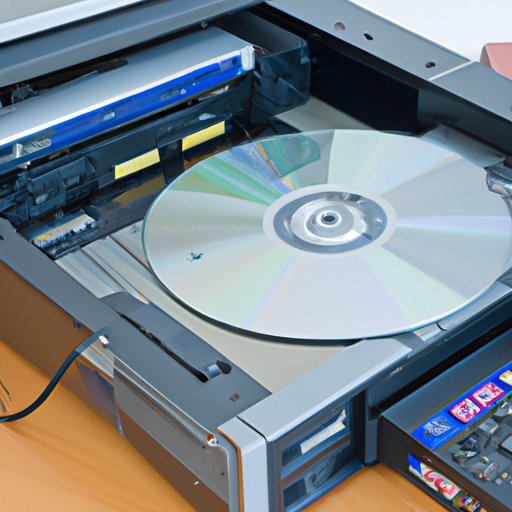Introduction
The DVD (Digital Versatile Disc) player has been a staple in homes for over 20 years now. It is one of the most popular ways to watch movies and tv shows at home, and it is also used in many commercial businesses such as restaurants, hotels, and movie theaters. But how does a DVD player actually work? In this article, we’ll explore the components that make up a DVD player and explain the basics of how they function together.

Explaining the Different Components of a DVD Player
A DVD player consists of several main components. Let’s take a look at each one in more detail.
Optical Drive
The optical drive is the part of the DVD player that actually reads the data on the disc. It contains a laser beam that scans the bumps and grooves on the surface of the disc. The optical drive then sends the data to the digital video decoder.
Disc Drive
The disc drive is responsible for spinning the disc so that the optical drive can accurately read the data. It is made up of two motors—one to spin the disc and the other to move the laser head that reads the data. Without the disc drive, the DVD player would not be able to read the data on the disc.
Digital Video Decoder
The digital video decoder is responsible for decoding the data that is read by the optical drive. It takes the raw data and converts it into a format that can be displayed on your television. If the digital video decoder is not working correctly, you may experience issues with the video quality of your DVD.
Audio Outputs
The audio outputs are responsible for sending the audio signal from the DVD player to your speakers or sound system. The audio outputs typically come in the form of RCA cables or an HDMI cable. Depending on your setup, you may need to purchase additional cables in order to connect your DVD player to your sound system.
Remote Control
Finally, the remote control allows you to control the DVD player from a distance. Most remotes have buttons for power, play, pause, rewind, fast forward, and menu navigation. Some models may also include additional buttons for special features such as scene selection or zoom.

The Basics of Playing DVDs on Your Home Theatre System
Now that we understand the components of a DVD player and how they work together, let’s explore the basics of setting up your home theatre system and playing DVDs on it.
Setting up Your Home Theatre System
The first step is to set up your home theatre system. This includes connecting the DVD player to your television and sound system. Depending on the type of connections available on your devices, you may need to purchase additional cables such as HDMI, RCA, or optical cables. Once everything is connected, you should be ready to start watching DVDs on your home theatre system.
Connecting the DVD Player to Your TV
In order to view the video from the DVD player on your television, you will need to connect the DVD player to your TV. This can be done using an HDMI cable, RCA cables, or an S-video cable. Refer to your user’s manual for specific instructions on connecting the DVD player to your TV.
Connecting the DVD Player to Your Sound System
In order to hear the audio from the DVD player on your sound system, you will need to connect the DVD player to your sound system. This can be done using an optical cable or an RCA cable. Refer to your user’s manual for specific instructions on connecting the DVD player to your sound system.
Troubleshooting Tips for the DVD Player
If you are having trouble getting your DVD player to work, here are some tips that may help:
- Make sure all cables are securely connected.
- Check that the disc is inserted correctly.
- Ensure that your television and sound system are compatible with the DVD player.
- Try unplugging the DVD player and plugging it back in.
How to Troubleshoot Common DVD Player Issues
If you are still experiencing problems with your DVD player after following the above steps, here are some additional troubleshooting tips.
Power Problems
If your DVD player won’t turn on, check the power cord and make sure it is securely connected to both the wall outlet and the DVD player. If the power cord is secure, try unplugging the power cord from the wall outlet and plugging it back in. If this doesn’t work, try a different power outlet.
Disc Read Errors
If the DVD player is not recognizing the disc, make sure the disc is inserted correctly. You may also need to clean the disc if it is dirty or scratched. If the problem persists, try a different disc.
Video or Audio Issues
If you are seeing video but no audio, make sure the audio output cables are securely connected and the volume is turned up on both the DVD player and your sound system. Also, make sure the audio source is set to “DVD” on your sound system.
Disc Playback Issues
If the disc is skipping or not playing correctly, try cleaning the disc (if it is dirty or scratched). You may also need to update the firmware on your DVD player.

Advantages and Disadvantages of DVD Players Compared to Other Media Formats
Although DVD players are still a popular way to watch movies and tv shows at home, there are some advantages and disadvantages compared to other media formats such as streaming services or Blu-Ray players.
Advantages
- Lower cost than other media formats.
- Wide variety of movies and tv shows available on DVD.
- Compatible with most televisions and sound systems.
- Easy to use and set up.
Disadvantages
- Discs can become scratched or damaged over time.
- Not as many features as other media formats.
- Requires a physical disc to watch movies or tv shows.
- Not as many new releases available on DVD.
Conclusion
In conclusion, the DVD player is a reliable and cost-effective way to watch movies and tv shows at home. Although it may lack some of the features of newer media formats, it is still a popular choice for many viewers. By understanding the components of a DVD player and how they work together, you can ensure your DVD player is set up correctly and running smoothly.
(Note: Is this article not meeting your expectations? Do you have knowledge or insights to share? Unlock new opportunities and expand your reach by joining our authors team. Click Registration to join us and share your expertise with our readers.)
